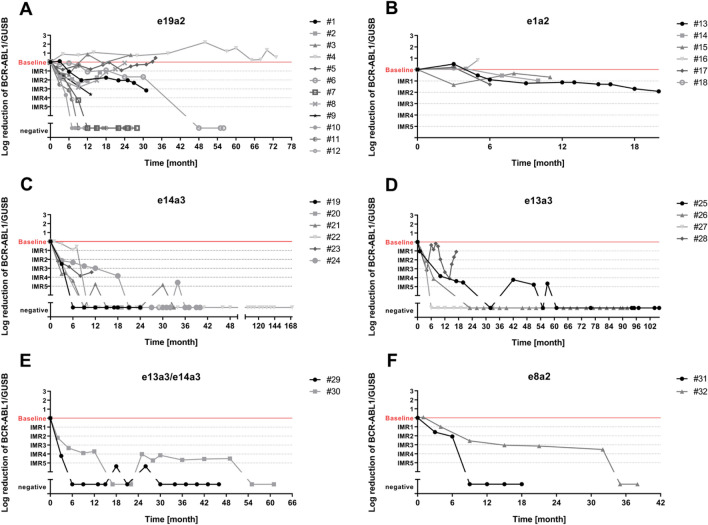Fig. 2.
Monitoring of CML patients with atypical BCR-ABL1 transcripts treated with tyrosine kinase inhibitors by RT-qPCR as log reduction in relation to the individual baseline value. The molecular response to therapy was evaluated as individual molecular response (IMR) levels. a Patients with e19a2 BCR-ABL1 transcript (n = 12) were monitored in the median for 17 months (range 9–73 months), whereby three patients relapsed (#2, #3, #8) and two patients (#4, #5) did not respond to therapy. b Monitoring of six CML patients with the atypical BCR-ABL1 transcript e1a2 was performed for a median time period of 8 months (range 5–20 months). All patients showed an unsatisfied molecular response to therapy. c Patients (n = 6) with the rarely found e14a3 BCR-ABL1 transcript could be monitored in the median for 24 months (range 11–170 months) and reached deep molecular remission. d Four patients harbored the e13a3 BCR-ABL1 transcript and could be monitored in the median for 19 months (range 17–106 months). After 17 months patient #28 relapsed, but all other remained in deep molecular remission. e The double transcript e13a3/e14a3 could be found in two CML patients with a very good response to therapy. The monitoring could be performed over a median time period of 21 months (range 46–61 months). f Patients with e8a2 BCR-ABL1 transcript (n = 2) were monitored in the median for 11 months (range 18–38 months) and reached a deep molecular remission

